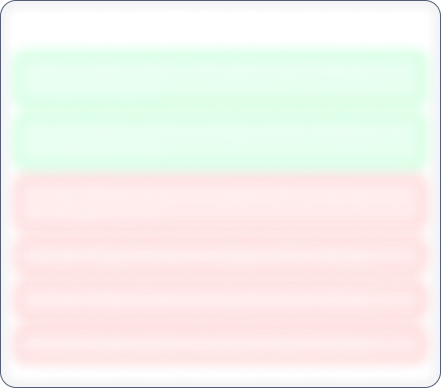Year End Sale 50% off
Lake Shore Realty

No Data Available
Investor Sentiment
Lake Shore Realty Share price and Fundamental Analysis
Key Metrics
Included In
Stock Returns
Stock Heatmap

No Stocks
Smart Score

Unlock Smart Score
See Detailed Analysis & Insights


Unlock Insights
See Detailed Analysis & Insights
Technicals
Returns Calculator
If you would have investedResearch Report
No Research Report
Corporate Action
Financials
Key Ratios
ROE
Avg ROE (3 Yrs) : NaN%
ROCE
Avg ROCE (3 Yrs) : NaN%
ROA
Avg ROA (3 Yrs) : NaN%
NPM
Avg NPM (3 Yrs) : NaN%
Dividend History
5 Year FactSheet
Documents

No Data Available
News
Lake Shore Realty Management and History
Company Management


Unlock Management Data
See Detailed Analysis & Insights
Company History
Mahaan Foods Limited (MFL) was originally incorporated as Himachal Milk Products Limited on March 13, 1987. The Company is primarily engaged in manufacturing of dairy products and pharma nutritional products.
A Milk Processing Unit was set up at Paonta Sahib in the State of Himachal Pradesh for processing skimmed milk to manufacture Dairy Whitener, Skimmed Milk Powder, Whole Milk Powder, Instantized Milk Powders, Baby Foods and other milk based products. The Company commenced commercial production in 1989 with an installed capacity to process 1.25 lac liters of Milk each day and eventually increased it to 2.5 lacs in the year 1994.
The company ventured into a new project Mahaan Protein Ltd to manufacture the non-conventional high value added products like Casein, Lactose, Whey Protein etc, which commercial production is started and also the export of the same. Mahaan has a total capacity of 10 lac litres of milk through owned, leased and contract manufacturing facilities.
Mahaan entered into a Contract with Heinz India Ltd. to set-up facilities for the manufacture of Glucon-D in Dec. 2003, at Paonta Sahib, Himachal Pradesh. Currently, it has facilities for manufacture of 6600 MT of Glucon-D per annum. After this, it set-up a facility at Paonta Sahib in the name of 'Mahaan Biosys' to manufacture Maltodextrin.
Lake Shore Realty Share Price
Lake Shore Realty share price reflects investor sentiment toward the company and is impacted by various factors such as financial performance, market trends, and economic conditions. Share price is an indicator which shows the current value of the company's shares at which buyers or sellers can transact.
Lake Shore Realty Market Cap
Market capitalization of Lake Shore Realty indicates the total value of its outstanding shares. Marketcap is calculated by multiplying share price and outstanding shares of the company. It is a helpful metric for assessing the company's size and market Valuation. It also helps investors understand how Lake Shore Realty is valued compared to its competitors.
Lake Shore Realty PE Ratio
Lake Shore Realty PE ratio helps investors understand what is the market value of each stock compared to Lake Shore Realty 's earnings. A PE ratio higher than the average industry PE could indicate an overvaluation of the stock, whereas a lower PE compared to the average industry PE could indicate an undervaluation.
Lake Shore Realty PEG Ratio
The PEG ratio of Lake Shore Realty evaluates its PE ratio in relation to its growth rate. A PEG ratio of 1 indicates a fair value, a PEG ratio of less than 1 indicates undervaluation, and a PEG ratio of more than 1 indicates overvaluation.
Lake Shore Realty ROE (Return on Equity)
Return on Equity (ROE) measures how effectively Lake Shore Realty generates profit from shareholders' equity. A higher ROE of more than 20% indicates better financial performance in terms of profitability.
Lake Shore Realty ROCE (Return on Capital Employed)
Return on Capital Employed (ROCE) evaluates the profitability of Lake Shore Realty in relation to its capital employed. In simple terms, ROCE provides insight to investors as to how well the company is utilizing the capital deployed. A high ROCE of more than 20% shows that the business is making profitable use of its capital.
Lake Shore Realty Total Debt
Total debt of Lake Shore Realty shows how much the company owes to either banks or individual creditors. In simple terms, this is the amount the company has to repay. Total debt can be a very useful metric to show the financial health of the company. Total debt more than equity is considered to be a bad sign.
Lake Shore Realty Debt to Equity Ratio
The Debt-to-Equity (DE) ratio of Lake Shore Realty compares its total debt to shareholders' equity. A higher Debt to Equity ratio could indicate higher financial risk, while a lower ratio suggests that the company is managing its debt efficiently.
Lake Shore Realty CAGR (Compound Annual Growth Rate)
CAGR shows the consistent growth rate of Lake Shore Realty over a specific period, whether it is over a month, a year, or 10 years. It is a key metric to evaluate the company’s long-term growth potential. Main metrics for which CAGR is calculated are net sales, net profit, operating profit, and stock returns.
Lake Shore Realty Technical Analysis
Technical analysis of Lake Shore Realty helps investors get an insight into when they can enter or exit the stock. Key components of Lake Shore Realty Technical Analysis include:
Support Levels (S1, S2, S3)
There are usually multiple support levels, but the main support levels for a stock are S1, S2, S3. Support levels indicate price points where stock might get support from buyers, helping the stock stop falling and rise.
Resistance Levels (R1, R2, R3)
There are usually multiple resistance levels, but the main resistance levels for a stock are R1, R2, R3. Resistance levels represent price points where Lake Shore Realty shares often struggle to rise above due to selling pressure.
Lake Shore Realty Dividends
Dividends refer to the portion of the company’s profits distributed to its shareholders. Dividends are typically paid out in cash and reflect Lake Shore Realty ’s financial health and profitability.
Lake Shore Realty Bonus Shares
Bonus shares are usually given by companies to make the stock more affordable, increase liquidity, boost investor confidence, and more.
Lake Shore Realty Stock Split
Stock split increases the number of its outstanding shares by dividing each existing share into multiple shares. When the company offers a stock split, the face value of the stock reduces in the same proportion as the split ratio.
Lake Shore Realty Financials
The financials of Lake Shore Realty provide a complete view to investors about its net sales, net profit, operating profits, expenses, and overall financial health. Investors can analyze financial data to assess the company’s stability and also understand how the company has been growing financially.
Lake Shore Realty Profit and Loss Statements
The profit and loss statement of Lake Shore Realty highlights its net sales, net profit, total expenditure, and operating profits in the current financial year. This Profit and Loss statement is crucial for evaluating the profitability and financial stability of Lake Shore Realty .
Lake Shore Realty Balance Sheet
The balance sheet presents a snapshot of Lake Shore Realty ’s assets, liabilities, and equity of shareholders, providing insights into the financials of the company.
Lake Shore Realty Cashflow Statements
Cashflow statements track the company's cash inflows and outflows over a period. It is an essential tool for understanding how well the company manages its liquidity and finances.


